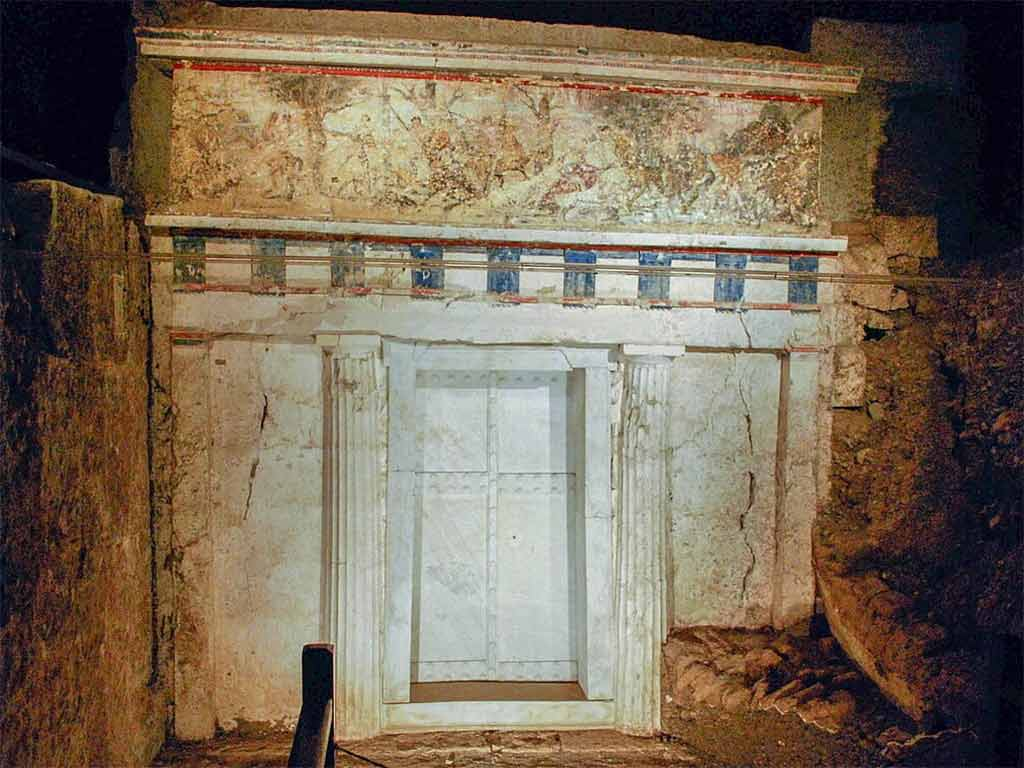
A team of Greek archaeologists from the University of Democritus in Thrace discovered remains of clothing that probably belonged to the great conqueror Alexander the Great, the newspaper Kathimerini highlighted today.
According to the findings of scientists led by Professor Antonis Bartsiokas, the material discovered in Vergina, the capital of ancient Macedonia, are the remains of a chiton.
This, in turn, was the main type of male and female clothing in ancient Greece.
The unusual cloth was found in a gold chest at the Royal Tombs museum complex in Virginia, and it also contains cremated human remains and a crown of precious metal.
On the other hand, chemical and microscopic studies of the purple material showed that the chiton was not simple at all and contained cotton and a specific mineral material.
All this was rare in ancient Greece, but typical of the high nobility of Persia.
After analyzing the materials, Bartsiokas concluded that the remains of clothing found are probably a costume from Alexander the Great, which he wore after the defeat of the army of the Persian king Darius III at Gaugamela and the subsequent conquest of Persia by the Greeks.
After the death of Macedonia in 323 B.C. this outfit was probably inherited by his brother Philip III Arrhidaeus, whose remains, along with the chiton, were found in the coffin, states the researcher.
This hypothesis refutes the widely accepted version that the remains of Alexander’s father, the Macedonian king Philip II, are buried in the Royal Tombs complex of Vergina, where the gold chest is currently displayed.
The necropolis, not looted in ancient times, with hundreds of unique artifacts inside in its original form, was discovered by archaeologists in 1977.
One of the most valuable finds is a sarcophagus of singular beauty made of pure gold with the Virginia sun engraved, symbol of Macedonian power.
If the version of Antonis Bartsiokas is correct, then the golden chest of the sarcophagus does not contain the remains of Philip II, but those of Alexander the Great's brother, Philip III Arrhidaeus. (Text and photo: PL)